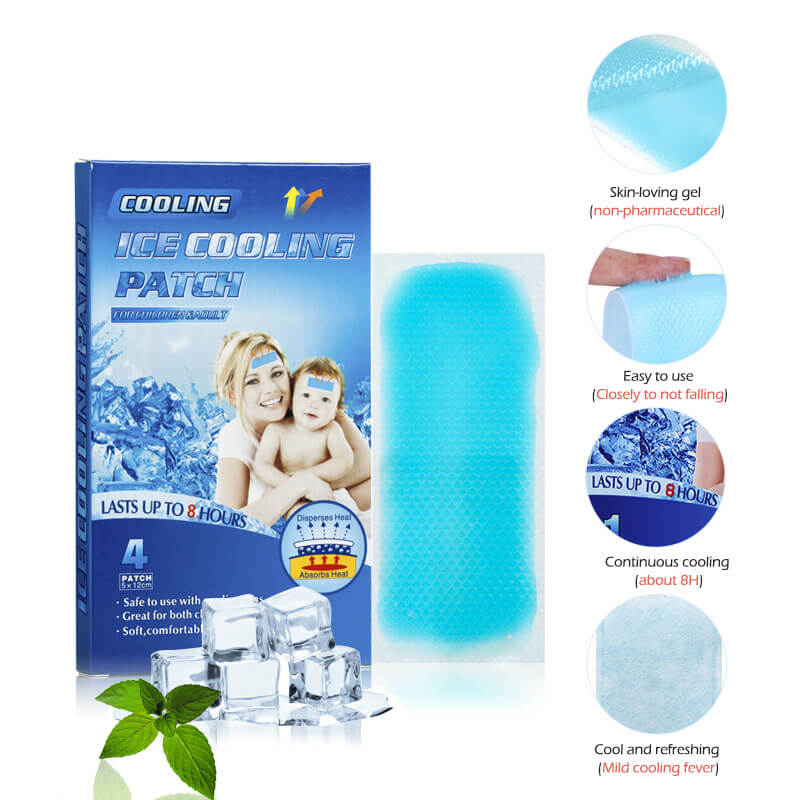Author:Kangdi 16-05-2024
When babies experience fevers, teething discomfort, or general fussiness, cooling gel patches have become a go-to solution for many parents looking to provide soothing relief. These convenient self-adhesive pads can be applied to an infant's forehead, cheeks, or other areas to instantly lower temperatures and calm restlessness. As the baby care market continues evolving, manufacturers of cooling gel patches are exploring new trends and innovations to enhance product performance and safety.
01. Plant-Powered Actives
While conventional cooling patches typically rely on menthol or camphor for their chilling sensations, forward-thinking brands are transitioning to gentler plant-based actives that are better suited for delicate infant skin. Ingredients like peppermint oil, menthyl lactate, and Cool-Act™ mint extract provide potent cooling without the harshness of synthetic menthol.
Botanical analgesics like non-GMO CBD are being incorporated into next-generation patches to not only reduce temperatures but also provide anti-inflammatory and pain-relieving benefits for teething infants. Other natural ingredients like chamomile and lavender offer calming aromatherapy effects.
02. Hydrogel Patch Technology
Rather than utilizing traditional hydrophilic gels, some of the most advanced cooling patches are constructed with innovative hydrogel materials. Hydrogels are three-dimensional cross-linked polymer networks that can absorb and retain larger volumes of water compared to basic gels.
When applied to the skin, hydrogel patches produce a superior cooling burst followed by sustained cooling effects as the hydrated gel gradually releases its thermal load over time. The soft, flexible hydrogel material also contours better to infants' delicate features versus rigid conventional gels.
03. Smart Temperature Regulation
To prevent overcooling and ensure infant safety, researchers are developing smart hydrogel patches with built-in thermoregulation. These pioneering patches incorporate temperature-responsive polymers that transition between a highly hydrated cooling state and a contracted non-cooling state based on skin temperature feedback.
For instance, a cooling patch could automatically disengage its cooling mechanism once skin temperature drops below a set threshold, preventing the infant from becoming too chilled. The patch would then automatically re-activate cooling effects if temperatures start rising again.
04. Improved Attachment Methods
While adhesives allow traditional cooling patches to temporarily adhere to skin, many parents dislike the residue and potential for skin irritation they can cause with prolonged infant use. Innovative new patches are exploring gentler attachment solutions like soft silicone wraps, hydrocolloid adhesives, and ultra-mild hydrogel adhesives derived from plant sources.
05. Sustainable, Clean Label Ingredients
As eco-conscious parents become more selective about the products they use, baby cooling patch manufacturers are "cleaning up" their ingredient decks to be clean label, sustainably-sourced, and environmentally-friendly. Synthetic preservatives, fillers, and dyes are being swapped for plant-based alternatives. Petroleum-derived components like vinyl adhesives are being replaced with bio-sourced hydrogel adhesives.
With cutting-edge innovations from smart hydrogels to plant-powered actives and sustainable components, the next generation of baby cooling patches aims to deliver superior performance and safety. As the infant care market evolves, manufacturers that lead the way in embracing these innovations will be well-positioned for future success.
 0086 19937104978
0086 19937104978





